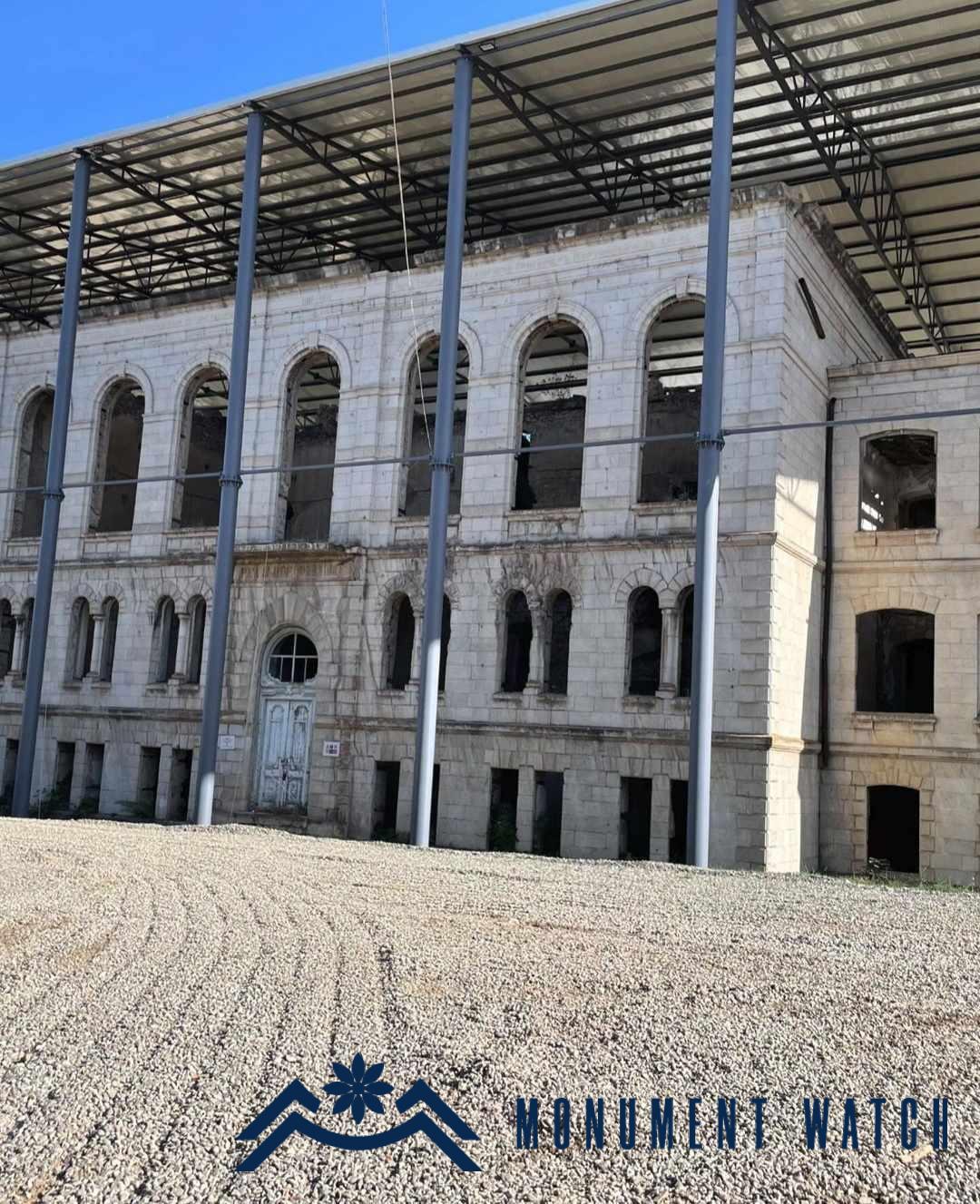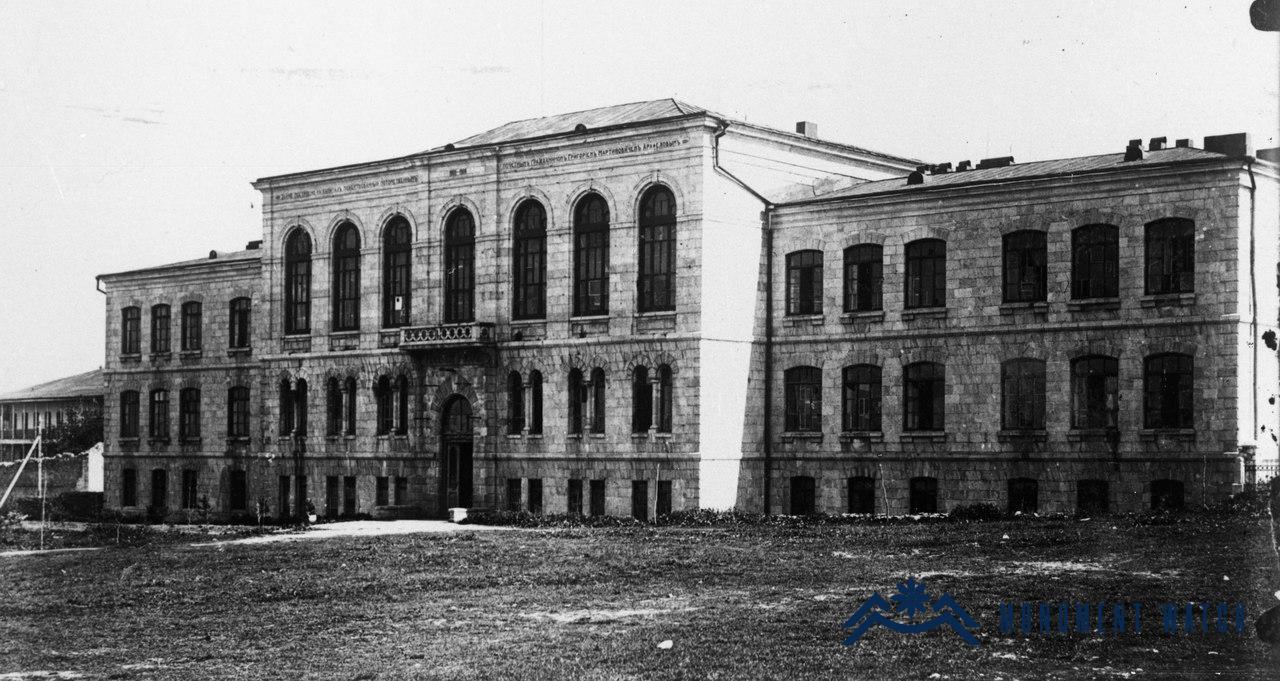The “restoration” of Shushi’s Realni School
After 2020, Shushi has become the focal point of Azerbaijan's efforts to erase, appropriate, and expropriate Armenian historical and cultural landmarks in the occupied territories of Artsakh. Following the cessation of hostilities, Azerbaijan swiftly embarked on a state policy aimed at altering and confiscating the Armenian historical and cultural landscape of Shushi. It's worth noting that this policy actually began during the Soviet era, specifically in the 1960s, when the history of Shushi underwent a process of revision. Consequently, scientific and popular literature about the city began portraying it as predominantly Azerbaijani, gradually diminishing references to its Armenian cultural and historical heritage, and eventually omitting them altogether.
In 2022, the government of Azerbaijan allocated funds for the restoration of the former real school building in the occupied city of Shushi (https://report.az/ru/vnutrennyaya-politika/na-vosstanovlenie-shushinskoj-realnoj-shkoly-vydelen-1-mln-manatov/, https://news.day.az/officialchronicle/1463535.html). Ilham Aliyev, who visited Shushi in May 2023, got acquainted with the building restoration project on the spot (https://www.youtube.com/watch?v=BnXyPzCj3rU). Judging by recent photographs, the building was covered with an iron roof.
The current building of the Realni School was built in 1901-1908 with the funds of Grigor Martini Arakelyan (Arakelov), a wealthy oil producer from Shushi, as evidenced by the Russian inscription on the main facade “The building was built in 1901-1908. With capital donated by honorary citizen Grigory Martinovich Arafelov" (Fig. 3). Written in Russian above the entrance is "Realni School" (Balayan 2017, 226-229). This is also visible in early 20th-century photos (Fig. 4).
In Soviet times, one of the city's schools was located in this building. In 1992, the building was damaged during military operations for the liberation of the city. Unfortunately, the Artsakh authorities did not have the opportunity to restore the building for many years, and the 44-day war of 2020 halted the planned works in this direction.
The Azerbaijani side remains silent not only about the real benefactor of the building but also about the actual number and national composition of the students who attended the Realni School.
The number of students at Shushi's Realni School varied over time. For example, in 1896, there were 298 students, with 236 being Armenians, and the rest comprising Tatars and Russians. By the 1911-1912 school year, the number of students increased to 370, with Armenians still forming the majority at 252, followed by 95 Tatars, 16 Russians, 3 Greeks, and 2 Jews. Looking at the data across the years, Armenian students consistently comprised 68-80 percent of the student body, with Tatars being the second largest group. Additionally, most of the teaching staff were also Armenians (Grigoryan, Harutyunyan 2001, 24).
Sedrak Mandinyan, Simon Hakhumyan, Hambardzum Arakelyan, Hakob Khojamiryan, Samvel Gyulzadyan, Ruben Ter-Gasparian, and others were among the educators at Shushi Real School. Renowned cultural figures, scientists, and statesmen such as Hovhan Gabrielyan, Andreas Arzumanyan, Arshak Hakobyan, Hayk Mirzabekyan, Ivan Knunyants, Vache Isaguliants, Andranik Iosifyan, Ashot Hovhannisyan, Stepan Aghajanyan, Samvel Safaryan, Alexander Bekzadyan, Sargis Kasyan, Sahak Ter-Gabrielyan, and many more contributed to the school's legacy (Balayan 2017, 226-229).
It's undeniable that notable Tatar figures also taught and studied at the Shushi School. Accurate data on the number of Tatar students and teachers exist. Moreover, Tatar students even attended the Armenian diocesan school, and the works of Tatar cultural figures were printed and staged in the Armenian printing house and theater (Balayan 2017, 332-338).
The concern about the potential deliberate erasure of the inscription on the main facade regarding Grigor Arakelyan, the builder of the building, is founded on the ongoing efforts of official Azerbaijan to erase all traces of Shushi's Armenianness. This is evident in the "restoration" projects of the two churches symbolizing the city, the Ghazanchetsots Cathedral and the Kanach Jam, as well as the destruction of Armenian historical cemeteries, among other actions (Balayan 2017, 332-338).
It's important to highlight that the Real School in the city of Shushi was established in 1881. Royal schools, like this one, were present throughout the Russian Empire and offered comprehensive education. Upon graduation from these schools, students had the opportunity to pursue higher education. These institutions held state status and conducted teaching in Russian.
Initially, the school's activities were organized in the residence of Movses Bey, a wealthy individual from Shushi. Later, by the decision of the Viceroy of the Caucasus, a small building was constructed in the Armenian quarter to accommodate the school.
Bibliography
- Balayan 2017 - Balayan V., The place and role of Shushi in the Armenian civilizational system, Yerevan.
- Grigoryan, Harutyunyan 2001 – Grigoryan H., Harutyunyan G., The realni school of Shushi, Yerevan.



